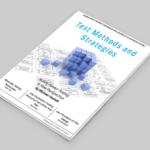 Dr. Cem Kaner – Director, Center for Software Testing Education & Research, Florida Institute of Technology
Dr. Cem Kaner – Director, Center for Software Testing Education & Research, Florida Institute of Technology
PC World Vietnam: What did you think of VISTACON 2010?
Dr. Kaner: I am very impressed that the event was very professionally organized and happy to meet my old colleagues to share and exchange more about our area of expertise. I was also very excited being one of the speakers at the conference and presented on some topics which focused on software testing as well as sharing some of my experiences from my research and work in this field.
PC World Vietnam: What do you believe are the most important skills required for a tester?
Dr. Kaner: Testers should have a good knowledge of the profession that they are working in; have testing skills and certain technology basics. For example, when testing banking or finance software, you should know about their trading activities, how they liquidate, and have a thorough grasp of some of the testing tools, testing plans and test automation methods. The technology basics means you should grasp some steps of the software development process, programming language skills, a knowledge of algorithms and operating systems. Besides that, other essential factors that can help you become a successful tester are having a good observant mind to easily recognize bugs during the testing process, the passion to apply the highest standards to the project, and finally, that you are always interested in new technology and new products.
PC World Vietnam: Could you please share with us your experience of undertaking testing projects in different countries?
Dr. Kaner: I have had the opportunity to work and collaborate on projects in the US and India in the field of software testing. From my experience, you should focus on the test cases created during the period you are creating code. Parallel to that, you need to improve the testing process to achieve the desired quality.
It is important to find ways to solve problems by preventing bugs instead of finding bugs. Testers should talk and share their experiences of finding bugs to improve their professional skills. Also, the wages paid to a tester in each country varies. For instance, in the US, the cost of hiring a tester is very high, so most companies outsource their projects to another country to save costs. According to Global Services Media, last year Ho Chi Minh City ranked 5th in the list top 50 emerging global cities in outsourcing software. That is a good sign for the development of the Vietnamese software industry.
PC World Vietnam: Vietnamese students often tend to become programmers instead of testers, what do you think about this?
Dr. Kaner: Actually, the hobbies and passions of each person will always be different. I myself have been rotated between the two positions of testing team manager and software programmers’ team manager. Some people find the testing field interesting, but others discover their own skills are more in line with programming. Those who prefer to focus on solving a problem or specific solutions may be appropriate as a programmer. But if you decide you want to become a tester, you should do your best to make this happen by studying hard and doing serious research.
PC World Vietnam: Thank you, Dr. Kaner
(This interview is condensed and translated from the PC World Vietnam Magazine – October 2010 Issue)


















